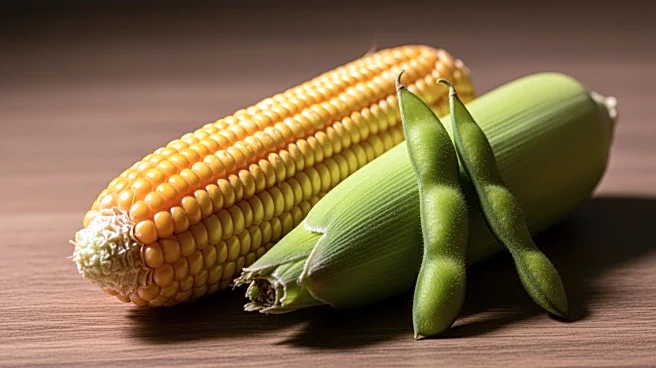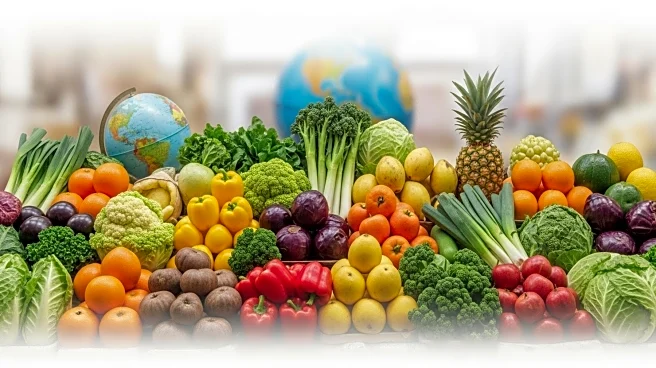What's Happening?
Corn and soybean futures in the U.S. experienced modest gains as of October 16, 2025, with December corn closing up 5 cents at $4.21¾ per bushel and November soybeans up 4¼ cents at $10.10¾ per bushel.
Wheat futures showed mixed results, with December CBOT wheat closing up 3¾ cents at $5.02½ per bushel, while December KC wheat was up less than a penny at $4.88¾ per bushel. Market analysts, including Naomi Blohm from Total Farm Marketing, suggest that corn and soybean futures may continue to trade in a lackluster pattern until more information regarding yield is available. The perception of corn yield in the low 180s bushels per acre could support prices, while a drop below 180 bushels could significantly impact U.S. and global balance sheets. Similarly, soybean prices could be supported if yields are closer to 51 bushels per acre, along with any positive developments in trade deals with China.
Why It's Important?
The performance of corn and soybean futures is crucial for U.S. agriculture, impacting farmers' income and the broader agricultural economy. The uncertainty surrounding yield estimates can lead to volatility in commodity prices, affecting planning and investment decisions for farmers and agribusinesses. A significant drop in yield could lead to reduced ending stocks, influencing both domestic and international supply chains. Additionally, any trade agreements with China could further affect soybean prices, given China's role as a major importer of U.S. soybeans. These developments are vital for stakeholders in the agricultural sector, including farmers, traders, and policymakers, as they navigate market dynamics and potential policy shifts.
What's Next?
Market participants will closely monitor yield reports and any updates on trade negotiations with China. The potential for a trade deal could provide a boost to soybean prices, while yield reports will be critical in determining future price movements for corn. Analysts and traders will also watch for any changes in weather patterns that could affect crop yields. Additionally, the broader economic indicators, such as crude oil prices and stock market performance, may influence commodity markets indirectly. Stakeholders will need to remain vigilant and adaptable to these evolving conditions.
Beyond the Headlines
The current market conditions highlight the interconnectedness of global trade and agriculture. The reliance on yield estimates and trade negotiations underscores the vulnerability of the agricultural sector to external factors, including geopolitical developments and climate variability. This situation may prompt discussions on the need for more resilient agricultural practices and diversified trade partnerships to mitigate risks associated with market fluctuations.











